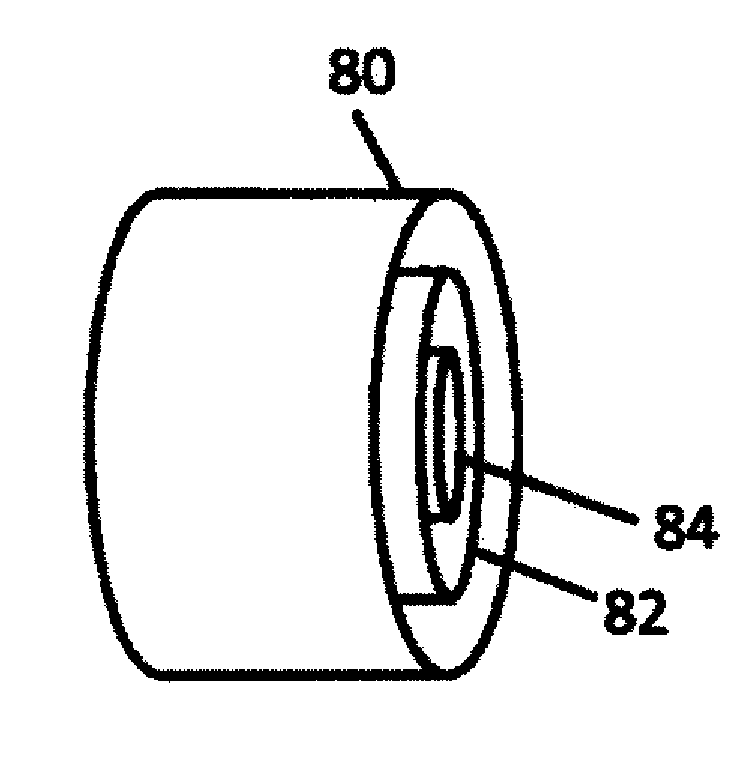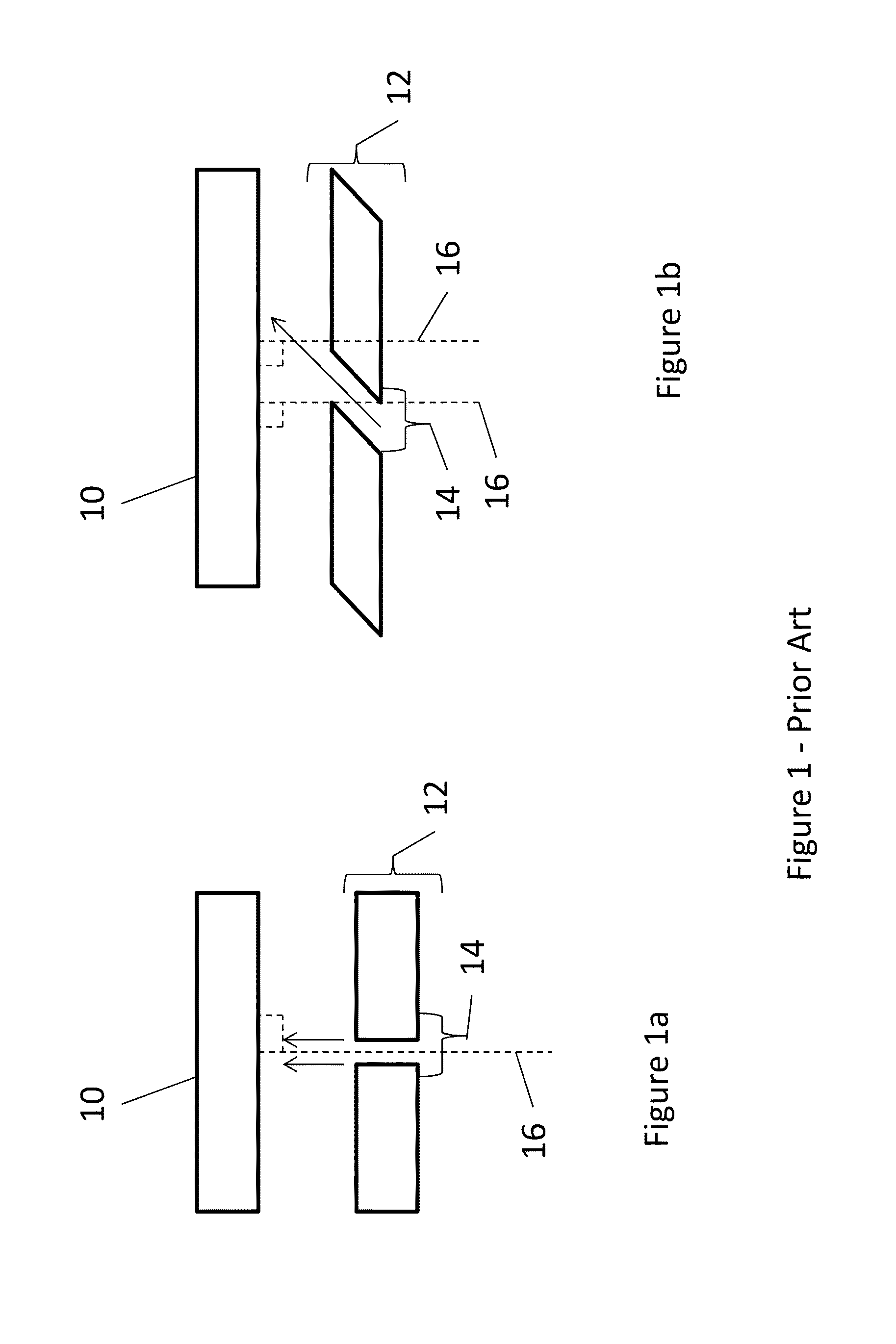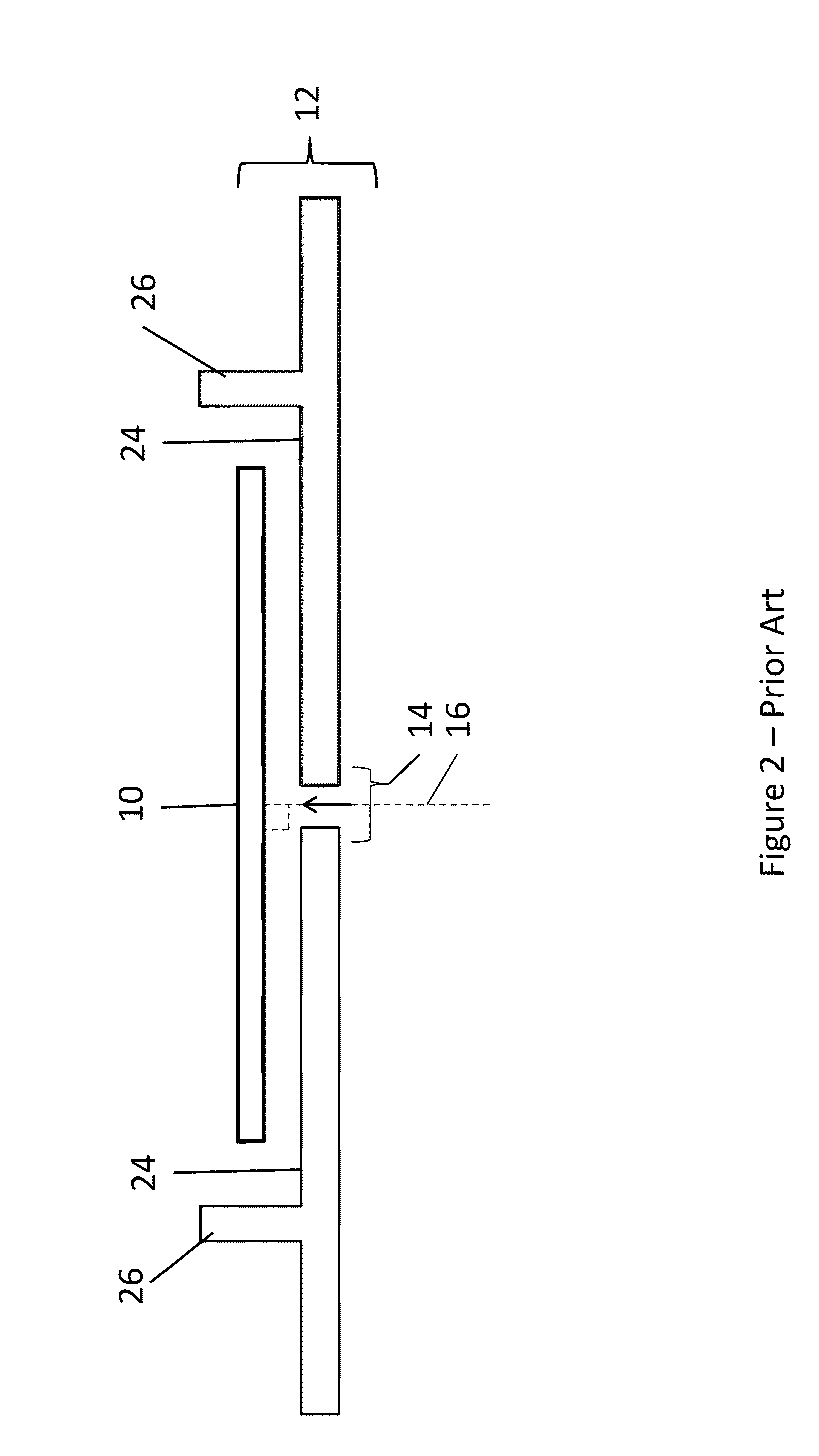Atomic-layer deposition method using compound gas jet
a gas jet and atomic layer technology, applied in chemical vapor deposition coating, metal material coating process, coating, etc., can solve the problems of substrate defect level, unacceptable substrate processing, and complicated substrate processing, so as to prevent unwanted reactions on the chamber surface, fast and uniform gas over the substrate, the effect of fast and uniform dispersion
- Summary
- Abstract
- Description
- Claims
- Application Information
AI Technical Summary
Benefits of technology
Problems solved by technology
Method used
Image
Examples
examples 1-14
Pneumatic Levitation with and without Levitation Stabilizing Structures
[0229]The purpose of the following examples is to demonstrate the effectiveness of levitation stabilizing structures for improving the positional stability of pneumatically levitated moveable substrates. Recalling that all prior art employed physical stops on the gas-emanating stationary support in order to prevent undesirable moveable substrate motion that would cause failure of pneumatic levitation, note that examples 1-14 were carried out in the absence of any physical stops being present on the gas-emanating stationary support that could impede moveable substrate motion. In other words, since the motion of the moveable substrate was completely unimpeded during pneumatic levitation, failure of the sample to remain in a stable position during pneumatic levitation could be easily detected, thereby enabling a simple determination of moveable substrate configurations which are positionally stable during pneumatic ...
example 1
[0232]2000 Å of thermal oxide was grown on a 675 micron thick, 150 mm diameter silicon wafer with a flat to indicate wafer orientation. The surface of wafer was completely featureless and planar. The wafer of example 1 was mounted on the stationary gas emitting support and an attempt was made to pneumatically levitate the moveable substrate at orthogonal jet manifold pressures between 10 and 35 psig. Although the wafer substrate levitated, the pneumatic levitation was not positionally stable and exhibited excessive, rapidly developing lateral motion. The moveable substrate of example 1 rapidly slid off the surface of the stationary gas emitting support: it did not remain in stationary during pneumatic levitation. Example 1 failed pneumatic levitation testing due to insufficient positional stability during levitation.
example 2
[0233]A levitation stabilizing structure consisting of an annulus having 100 mm inside diameter, 102 mm outside diameter, and a height of approximately 200 microns was fabricated on the surface of a 650 micron thick, 150 mm diameter silicon wafer with a flat that indicated wafer orientation. The levitation stabilizing structure was fabricated by coating the wafer with SU-8 resist that was photolithographically patterned and developed to produce the levitation stabilizing structure on the surface of the moveable wafer substrate of example 2. The surface of the wafer was completely featureless and planar with the exception of the levitation stabilizing structure. The wafer of example 2 was mounted on the stationary gas emitting support and an attempt was made to pneumatically levitate the moveable substrate at manifold pressures between 10 and 35 psig. The moveable substrate of example 2 was pneumatically levitated at orthogonal jet manifold pressures greater than 10 psig and showed e...
PUM
| Property | Measurement | Unit |
|---|---|---|
| time | aaaaa | aaaaa |
| time period | aaaaa | aaaaa |
| time | aaaaa | aaaaa |
Abstract
Description
Claims
Application Information
 Login to View More
Login to View More - R&D
- Intellectual Property
- Life Sciences
- Materials
- Tech Scout
- Unparalleled Data Quality
- Higher Quality Content
- 60% Fewer Hallucinations
Browse by: Latest US Patents, China's latest patents, Technical Efficacy Thesaurus, Application Domain, Technology Topic, Popular Technical Reports.
© 2025 PatSnap. All rights reserved.Legal|Privacy policy|Modern Slavery Act Transparency Statement|Sitemap|About US| Contact US: help@patsnap.com



